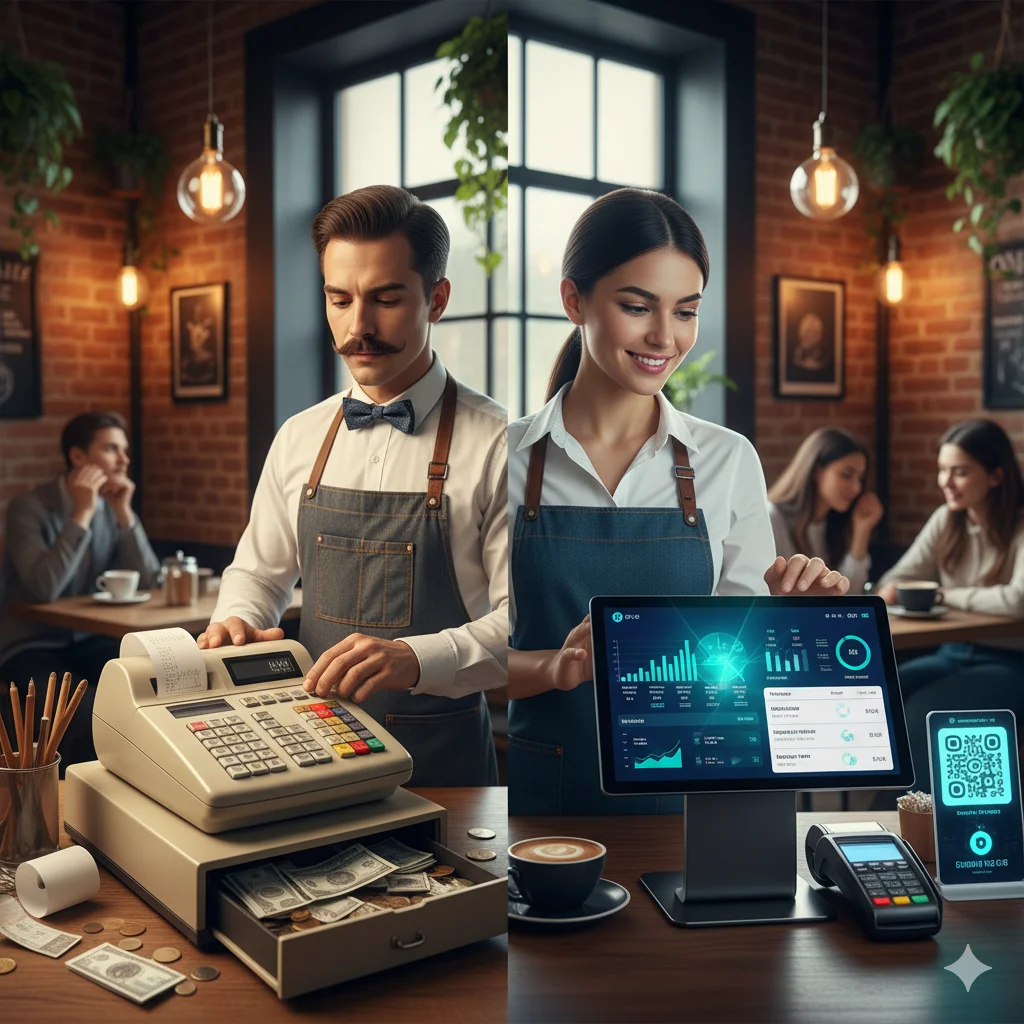In Malaysia’s rapidly expanding food delivery ecosystem, restaurants and cafés must embrace POS system delivery integration to stay competitive. Platforms such as GrabFood, FoodPanda, and UberEats dominate online orders, and manually managing these channels is no longer viable. By integrating these delivery apps directly into a restaurant’s POS system, businesses can streamline order processing, ensure accurate inventory tracking, and elevate the customer experience. Modern systems like StoreHub, Slurp, and Lightspeed Restaurant POS enable seamless multi-channel operations, reducing errors and improving operational efficiency.
Why Delivery Integration is Critical for F&B Businesses
Operating without integrated delivery management is akin to juggling multiple tasks without coordination—it increases the risk of errors, slows service, and compromises customer satisfaction.
- Manual order entry → Staff must retype orders from delivery tablets, increasing mistakes.
- Delayed prep times → Orders arrive late in the kitchen, affecting delivery punctuality.
- Inventory mismatches → Online platforms may show sold-out items as available.
- Fragmented reporting → Dine-in, takeaway, and delivery sales remain siloed.
Impact: With POS + delivery app integration, online orders flow directly into the POS, inventory updates in real-time, and financial reporting is automated—eliminating duplicate entry and streamlining operations.
Key Benefits of POS-Delivery Integration
- Real-Time Order Management
Integrated POS systems ensure delivery orders reach the kitchen immediately, maintaining smooth operations alongside dine-in service.
- Eliminates manual re-entry of orders.
- Reduces human errors during peak hours.
- Supports parallel dine-in and delivery workflows.
Case Example: A café in Petaling Jaya reported a 30% faster turnaround time after implementing StoreHub POS + GrabFood integration.
- Accurate Inventory Tracking
Delivery orders automatically adjust POS inventory, providing precise stock levels and reducing cancellations.
- Prevents overselling of menu items.
- Tracks ingredient usage dish-by-dish.
- Sends instant low-stock alerts to managers.
Impact: Enhances customer satisfaction by ensuring menu accuracy on all delivery platforms.
- Centralized Sales Reporting
POS integration consolidates revenue streams across dine-in, takeaway, and delivery channels.
- Complete visibility of multi-channel sales.
- Identifies top-selling dishes per platform.
- Simplifies accounting, tax compliance, and financial audits.
Benefit: Enables owners to assess delivery’s contribution (e.g., 20–50% of revenue) and make informed decisions.
- Enhanced Customer Experience
Integrated systems allow restaurants to deliver faster, more accurate service while personalizing customer interactions.
- Orders routed instantly from app → POS → kitchen.
- Accurate estimated delivery times.
- Loyalty program promotions synced automatically.
Pro Tip: Cloud POS with CRM integration can target repeat GrabFood customers with personalized discounts, improving retention.
- Reduced Operational Costs
Manual entry of delivery orders often requires additional staff. Integration optimizes labor utilization.
- Frees staff to focus on customer service.
- Streamlined workflows reduce food waste.
- Improves efficiency, lowering labor costs.
ROI Impact: Many cafés report saving 10–15 staff hours per week, translating into significant annual savings.
Popular POS Systems Supporting Delivery Integration
Not all POS platforms integrate equally with delivery apps. Here’s a breakdown of leading solutions suitable for Malaysian F&B businesses:
- StoreHub POS → Optimized for Southeast Asia; strong GrabFood & FoodPanda integration.
- Slurp POS → Localized for Malaysia, with delivery modules ideal for SMEs.
- Lightspeed Restaurant POS → Cloud-based, supports multi-channel sales globally.
- Toast POS → US-focused but accessible via partners in Malaysia.
- Upserve POS → Advanced reporting and delivery sync for mid-to-large chains.
- Assessing Business Size and Operational Model
The scale and operational model of a restaurant significantly influence POS system requirements. Smaller establishments, such as independent cafés, may benefit from cost-effective, cloud-based POS solutions that offer seamless integration with delivery platforms like GrabFood and FoodPanda. Conversely, multi-location chains necessitate robust POS systems with centralized dashboards to manage operations across various outlets effectively (Kocaman, 2021).
- Evaluating Delivery Platform Compatibility
Ensuring that the POS system integrates with preferred delivery platforms is crucial. Compatibility with services such as GrabFood, FoodPanda, and UberEats facilitates streamlined order processing and inventory management, reducing the risk of errors and enhancing customer experience (Kocaman, 2021).
3. Considering Implementation and Support
The ease of setup and availability of local technical support are vital considerations. POS systems that offer plug-and-play functionality can expedite deployment, while those with local support in Malaysia ensure timely assistance and troubleshooting, minimizing operational disruptions (Kocaman, 2021).
4. Analyzing Cost Implications and Return on Investment
A comprehensive cost-benefit analysis should be conducted, weighing the monthly subscription fees against potential savings from reduced order errors and improved staff efficiency. Investing in a POS system with integrated delivery capabilities can lead to significant long-term financial benefits (Kocaman, 2021).
Common Operational Challenges and Solutions
Despite the advantages, integrating delivery platforms with POS systems may present certain challenges:
- Sync Errors: Occasionally, orders may not appear in the POS system.
Solution: Utilize cloud-based POS systems with automatic backups and ensure a stable internet connection to maintain data integrity (Kocaman, 2021). - Hidden Fees: Additional charges for delivery integration can impact profitability.
Solution: Clarify all costs with the POS vendor upfront to avoid unexpected expenses (Kocaman, 2021). - Staff Training: New systems may pose a learning curve for employees.
Solution: Implement comprehensive onboarding sessions that emphasize the time-saving benefits and user-friendly features of the POS system (Kocaman, 2021).
Conclusion
Selecting the right POS system with integrated delivery capabilities is essential for modern restaurants aiming to enhance operational efficiency and customer satisfaction. By carefully considering factors such as business size, delivery platform compatibility, implementation ease, support availability, and cost implications, establishments can make informed decisions that align with their operational goals and customer expectations.
Case Studies – Malaysian F&B Businesses Going Digital
- Don’s Diner, Kuala Lumpur → Cut order mistakes by 40% after POS + GrabFood integration.
- Tea Verandah Café, Penang → Faster delivery dispatch improved customer satisfaction scores.
- Cibiuk Restaurant, Selangor → Managed dine-in and delivery orders from a single interface, boosting sales by 25%.
FAQ – POS + Delivery Integration
Q1: How much does POS-delivery integration cost in Malaysia?
Most systems range RM150–RM1000/month.
Q2: Can multiple apps integrate into one POS?
Yes, platforms like StoreHub and Lightspeed support GrabFood + FoodPanda integration.
Q3: Is cloud POS better than traditional POS for delivery?
Absolutely. Cloud POS updates in real-time, while traditional POS often requires manual uploads.
Q4: Can small cafés benefit?
Yes. Even a 20-seat café saves time, reduces errors, and improves margins.
Conclusion – Delivery Integration is Essential
In Malaysia’s fast-paced F&B market, POS delivery integration is no longer optional—it’s critical for survival. Connecting your POS to GrabFood, FoodPanda, and UberEats delivers:
- Real-time order sync → fewer mistakes.
- Centralized reporting → smarter decisions.
- Faster service → higher customer satisfaction.
- Reduced operational costs → stronger profitability.
Whether operating a small café in Ipoh or a multi-chain restaurant in Kuala Lumpur, integrating your POS with delivery platforms ensures efficiency, accuracy, and business scalability in the era of online food ordering.





